PlayStation 4K, Xbox "Neo," and the Unhappy History of Mid-Cycle Console Upgrades
Sony and Microsoft's plan to refresh their current consoles has become the industry's worst-kept secret, but they'll be fighting uphill against history.
This article first appeared on USgamer, a partner publication of VG247. Some content, such as this article, has been migrated to VG247 for posterity after USgamer's closure - but it has not been edited or further vetted by the VG247 team.
Since home video gaming first split into two schools of ownership — consoles versus computers — the rules have been clear. PCs offer greater performance and horsepower, but consoles don't require add-ons down the road, and they offer players a fixed, finite price for their gaming.
That may change soon, though. The industry grapevine has been abuzz for the past few weeks with rumors of a "PlayStation 4K" and an "Xbox Neo," new iterations of Sony and Microsoft's current consoles that would offer greater power at a higher price. These would not be entirely new platforms, however; rather than getting an early start on a next generation of consoles, both giants appear to plan to position these systems as upgrades to their current machines. The word "upgrade" might be a bit deceptive, though, as neither console is said to offer an actual upgrade path for current owners. Instead, existing PlayStation 4 and Xbox One owners (all 60 million or so of them) would need to buy entirely new machines. For the Sony faithful, that added cost would likely come soon after the $400 cost of the PlayStation VR launch... a device that itself seems almost certain to receive its own upgrade soon after, once Sony starts selling a system capable of pushing the 4K graphics necessary to go mano-a-mano with more powerful PC-based VR solutions like Rift and Vive.
Unless there's some surprise plot twist to these rumors, both Sony and Microsoft appear to be jettisoning one of the most basic rules of console gaming: The promise of stability. If staying at the leading edge of console gaming means dropping $400-500 every three years instead of every six, what real difference is there between console and PC gaming? Once upon a time, PC upgrades demanded a heavy capital investment, but these days you can build a gaming computer that stomps any console for nearly the same price as a closed box... and, now, you can keep that PC upgraded for less than the price of trading up to a point-revision console.
We'll wait and reserve judgment until after E3, where both companies will presumably reveal their new (-ish) consoles and make their case for double-dipping. In the meantime, though, it's also worth considering the history of incremental console upgrades. PS4K and Xbox Neo won't be the first mid-cycle upgrades the console industry has ever seen, but it's easy to forget about the history behind this approach because we haven't seen it happen outside of handhelds for 20 years. And not without reason. Mid-cycle upgrades have more often than not turned out to be disasters, doing more harm than good.
Consider the following historic examples, as we've isolated a baker's dozen - or if you prefer, an unlucky 13 - of iterative consoles stretching back into the early '80s. We've picked out handhelds and consoles only, not PCs, and strictly revisions that incorporate significant hardware improvements rather than cosmetic tweaks. This isn't a comprehensive list, more of a general survey. Nevertheless, it paints an uninspiring portrait of the future.
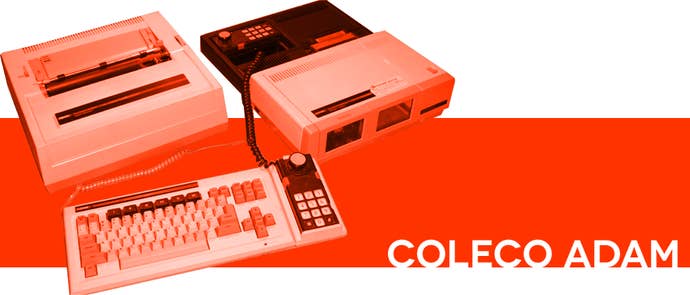
Release date: 1983 | Update to: ColecoVision
What was it? Coleco released several "expansion modules" for its ColecoVision console. One of these was simply a steering wheel peripheral; another allowed owners to play Atari 2600 cartridges on their system. The last of them, however - Expansion Module #3 - turned the console into an actual computer, with a keyboard, printer, and diskette or cassette drive. The boosted ColecoVision became the Coleco ADAM, which offered players access to about two dozen exclusive games that wouldn't run on the stock ColecoVision, which continued to sit at the heart of the machine.
How did it fare? Poorly, to say the least. Some of that was circumstantial - the ADAM launched after the U.S. console market had begun to implode - but consumers would have received the system with lukewarm enthusiasm regardless. It was a huge, clumsy setup, for one; and it felt underpowered compared to the contemporary Commodore 64 (the gamer's computer!) yet cost far more. In fact, ADAM would have bankrupted Coleco right away if it weren't for the triage provided by the runaway success of the Cabbage Patch Kids doll line.
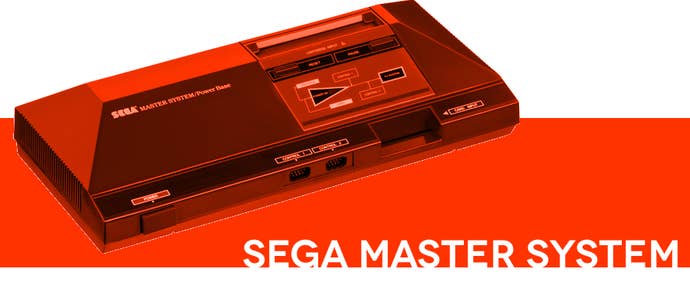
Release date: 1985/86 | Update to: SG-1000
What was it? SEGA's "first" console was first only outside of Japan; over there, the Master System was known as Mark III, as in "the third iteration of a console." The older console in question? The SG-1000, essentially a SEGA-branded ColecoVision that debuted in 1983. SEGA found its system rendered instantly second-best by the Nintendo Family Computer (NES), which debuted on the same day as the SG-1000. Two years later, the Mark III debuted, running on the same processor as the SG-1000 (and even offering backward compatibility, an industry first!) but primarily powered by a tremendous new graphical coprocessor that made it a more capable console than the NES.
How did it fare? In Japan? Horribly. The SG-1000 had been a modest success, but SEGA's annual iterations on the console (which also shipped as an ADAM-like computer, the SC-2000) impressed no one. Sega phased out the Mark III by 1988 to make way for its Mega Drive (Genesis). Overseas, however, where the Mark III became the Master System and lacked any signs of an iterative history, the console blew up. Its U.S. sales were double what it saw in Japan, and it sold nearly four times its U.S. and Japanese numbers in Europe and Brazil, where it received support into the late '90s.
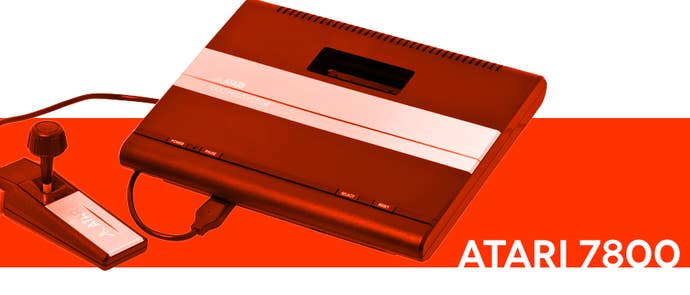
Release date: 1986 | Update to: Atari 2600
What was it? After the disastrous Atari 5200, the company decided to stick to its strengths and create a console that, like the Master System, was built around the core of its previous system and offered backward compatibility. The 7800 took elements of the popular 2600 and reworked it into something almost completely new, capable of pushing visuals more on par with the NES.
How did it fare? The 7800 would have been a trailblazer had it launched in 1984, its intended release date. Instead, it launched in 1986, after the NES and alongside the superior Master System. The console found some small traction as the budget alternative to those consoles and did moderately well for itself, but ultimately it saw fewer than 60 official game releases in its lifetime. That's not even as many as the poor, beleaguered Lynx!

Release date: 1986 | Update to: Family Computer
What was it? A diskette drive add-on to Nintendo's first console, released only in Japan. The idea behind the Disk System was to offer an inexpensive media format with greater memory capacity than cartridges, as well as some nice quality-of-life features such as an extra audio channel and the ability to save game data.
How did it fare? Of all the updates on this list, Disk System is one of the few that qualifies as a genuine success - though it ultimately proved to be short-lived. Several million units sold, and it gave birth to genuine classics (including Castlevania, Metroid, and The Legend of Zelda). In the end, though, it became obsolete in about a year as NES memory mapper chips allowed cartridges to exceed diskette storage capacity, and the addition of on-board SRAM to carts even made it possible to save data. The Disk System never left Japan, because it didn't need to. Still, it saw more than 200 game releases thanks in large part to its low media cost and an innovative distribution system that let players take blank disks to convenience store kiosks to cheaply download new releases.

Release date: 1988/90 | Update to: NEC TurboGrafx-16
What was it? An endless succession of upgrades to the PC Engine/TurboGrafx-16. NEC put together a CD-ROM add-on to allow for greater storage capacity... then released two separate revisions of that peripheral. These were followed by the SuperGrafx, a more powerful TurboGrafx featuring boosted RAM capacity.
How did it fare? NEC's console succeeded in Japan despite itself, and the CD-ROM add-on's early debut (arriving just a year after the core console) made it more or less the default version of the platform for many publishers. Outside Japan, however, it fared more poorly, with few Americans willing to take the expensive plunge into a badly marketing and hugely expensive two-part console. The SuperGrafx, on the other hand, proved to be a dud everywhere: Despite its impressive power, it saw a grand total of seven games throughout its life, making it the poster child for ill-conceived console expansions.

Release date: 1991/92 | Update to: SEGA Genesis
What was it? As with NEC, SEGA decided to launch its own CD-ROM expansion for the Genesis/Mega Drive. The SEGA CD offered more storage capacity than carts and some inherent processing power boosts to allow for more impressive games that helped close the gap between Genesis and Super NES.
How did it fare? Mega Drive didn't fare well in Japan, and the CD add-on failed to turn those fortunes around. In the west, however, the Genesis was the system to own, and SEGA CD did reasonably well for itself. While it was never a smash hit, it nevertheless was well-received by fans and played home to some of the most interesting niche titles of the 16-bit era.
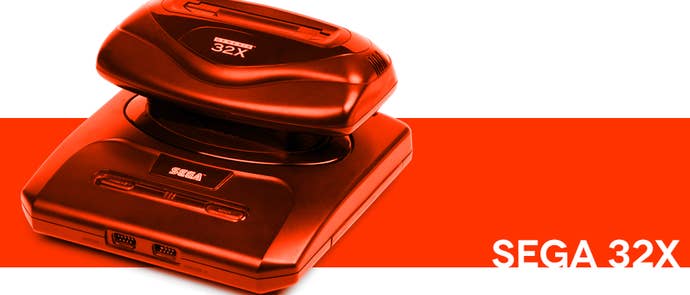
Release date: 1994 | Update to: SEGA Genesis
What was it? A misbegotten console add-on designed to boost the Genesis to 32-bit level power... despite the fact that an actual 32-bit SEGA console was in the wings for the following year.
How did it fare? It's not too much of a stretch to say that the 32X destroyed SEGA's console business. It debuted at a hugely expensive price and suffered from muddled messaging from the start - was it worth owning? Should SEGA fans wait for the Saturn instead? No one knew! - and immediately failed at retail. Worse, though, it undermined the goodwill SEGA had built with its fans during the Genesis era. Consumers saw the add-on as a cynical money grab, and that sour perception has even retrospectively tainted the excellent SEGA CD's reputation. The losses the company's console business took in the ensuing years forced them to go third-party in 2001, despite the Dreamcast's strong launch. That's right: This iterative console was a giant-killer.

Release date: 1994 | Update to: Neo•Geo
What was it? Another CD-ROM expansion, this time for SNK's powerful Neo•Geo console.
How did it fare? The Neo CD ended up selling about half a million units, which by the standards of the extremely niche Neo•Geo platform made it a reasonable success. The Neo CD was one of the rare iterative consoles that wasn't about improving power but rather pricing: The standard Neo•Geo was infamously one of the most expensive consoles ever, and its massive cartridges retailed for as much as $300. This CD-ROM alternative brought the price of hardware and media to a fraction of the cart-based AES, but at a different kind of price: The single-speed CD drive read data at an excruciating rate, adding massive, joy-killing pauses to the platform's trademark high-octane action experiences.
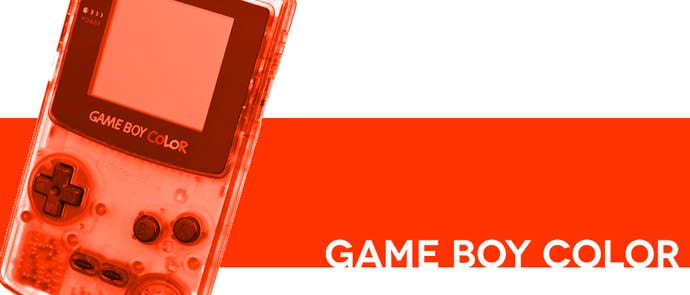
Release date: 1998 | Update to: Game Boy
What was it? An upgraded revision of the Game Boy, doubling its processing power and adding a long-demanded feature: A color screen.
How did it fare? Incredibly well, though it's almost not fair to refer to the Game Boy Color as iterative. It debuted a whopping nine years after the original Game Boy, and practically qualifies as a standalone generational leap in logistical terms if not technical ones. This is how you do an iterative system: Offer a clear advantage (more power! exclusive games! color!) at a great price.

Release date: 1999 | Update to: Nintendo 64
What was it? The Nintendo 64 equivalent to the Famicom Disk System, this add-on (code-named "bulky drive") used magnetic media similar to Iomega's Zip disks to offer a cheaper, more capacious, rewritable alternative to N64's insanely expensive cartridges. Production delays kept it from launching in a timely fashion, however, and it only ever shipped in Japan.
How did it fare? The "DD" in 64DD may as well stand for "dead-on-arrival disaster," because it was a massive flop. The 64DD's delays made it moot by the time it actually shipped, so it only appeared in Japan, where N64 was a distant third to PlayStation and SEGA Saturn. Expensive, unnecessary, late, and poorly supported - a loser in anyone's books.
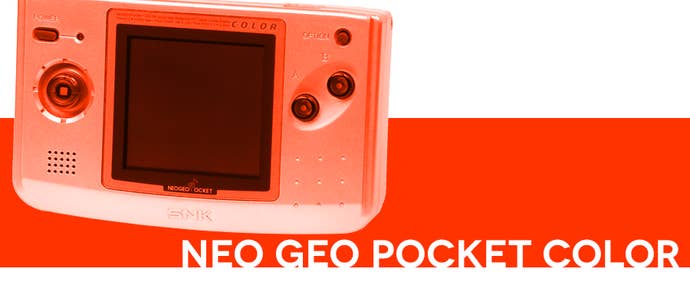
Release date: 1999 | Update to: Neo Geo Pocket
What was it? A slightly upgraded version of the Neo Geo Pocket handheld system, featuring a color screen.
How did it fare? While the NGP platform in general struggled to make much headway against Game Boy, you can't really blame that on this upgrade. The original NGP shipped in extremely limited quantities in Japan and Europe before SNK replaced it with this upgraded version. As such, Americans only ever saw the color console, and only a handful of games shipped with monochrome-only support. In fact, it's much harder to find a monochrome Neo Geo Pocket than a Color model! It's difficult to describe this platform as a success, exactly, but this is a rare instance of an iterative release that vastly outperformed the original model.

Release date: 2010 | Update to: Nintendo DS
What was it? An upgraded rendition of the Nintendo DS, abandoning the Game Boy Advance cartridge slot in favor of slightly boosted power and support for downloadable software.
How did it fare? The DSi wasn't a disaster, but it benefitted consumers a lot less than it did Nintendo. You can count the number of retail games that took advantage of DSi's enhancements on your fingers. Rather, DSi allowed Nintendo to dip a toe into the waters of digital distribution, though few DSi download releases merited the upgrade. In truth, the biggest change the DSi brought actually worked to customers' disadvantage: It introduced region-locking to Nintendo's handhelds, abandoning the company's two-decade tradition of region-free portable gaming. The real irony: All but a few region-locked "DSi-enhanced" games made no use of DSi's hardware boosts would still work on original DS or DS Lite hardware from anywhere in the world, meaning import-savvy fans were better off not upgrading.
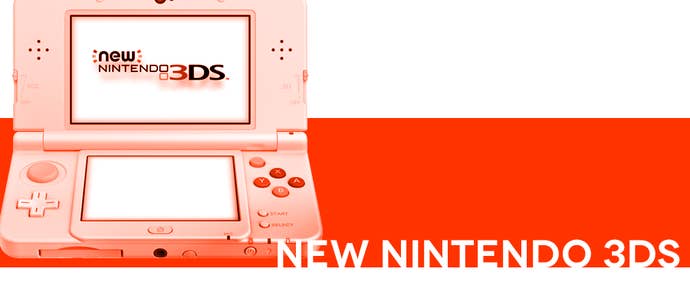
Release date: 2015 | Update to: Nintendo 3DS
What was it? The 3DS equivalent of the DSi, offering some minor quality-of-life perks along with significantly improved processing power.
How did it fare? It's a bit early to say, but so far New 3DS hasn't offered many thrills. As with DSi, only a handful of game releases have made full use of its enhanced capabilities. The most compelling arguments for New 3DS have been playing Xenoblade Chronicles (available for purchase on Wii and Wii U), running Hyrule Warriors Legends more smoothly (a game also available on Wii U), or playing Super NES Virtual Console titles (all of which, so far, have also appeared on Wii U).
Final thoughts:
Mid-generational console upgrades have flopped more frequently than they've flown. Only a few of these half-measures qualify as absolute successes; the two biggest hits were Nintendo creations - Famicom Disk System and Game Boy Color - both of which succeeded due to their very peculiar circumstances. The Disk System offered both a technical and financial advantage by increasing the console's capabilities while giving consumers a less-expensive (yet higher-capacity) medium in the form of diskettes. Meanwhile, the Game Boy Color arrived nearly a decade after the original Game Boy in a section of the market that no one else even cared about. Iterations also work best in markets that haven't yet seen the original machine, as with SEGA Master System and SNK Neo•Geo Pocket — a moot point for Sony and Microsoft at this stage of the console cycle.
Ultimately, the closest analogue to the PS4K and Xbox Neo - at least based on the rumor mill's murmurings - would appear to be Nintendo's recent mid-cycle handheld upgrades. The DSi and New 3DS have seen very few releases that exclusively take advantage of their boosted capabilities... though there have been a few games that technically work on both standard 3DS and New 3DS, but perform so poorly on the former as to be unplayable. New 3DS doesn't offer many compelling reasons to upgrade, but compromised dual-format titles like Hyrule Warriors Legends nevertheless punish fans who don't trade up. We'd like to think that won't happen with PS4K and Xbox Neo, but it's far less common to see studios take great pains to include players who stay behind (as with last year's shockingly excellent Xbox 360 version of Rise of the Tomb Raider) than it is to see them shrug and say, "Eh, good enough."
In any case, history doesn't offer much reason to be optimistic about these purported console revisions... but in fairness, every console generation is different than the last. And it seems a bit defeatist to write off hardware not only without playing it, but without a formal announcement. We're wary, but we'll be watching this year's E3 press conferences with great interest.
Image sources: Reddit, Evan Amos




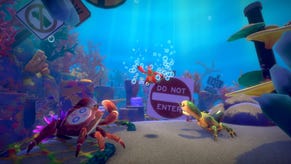
.jpg?width=291&height=164&fit=crop&quality=80&format=jpg&auto=webp)


